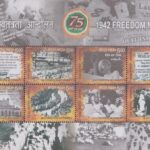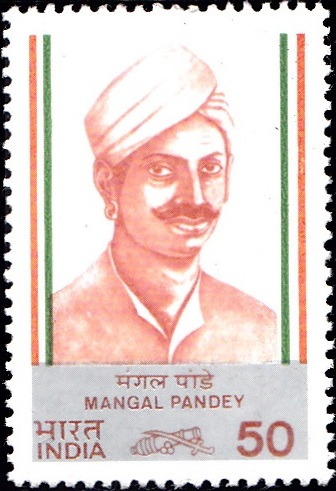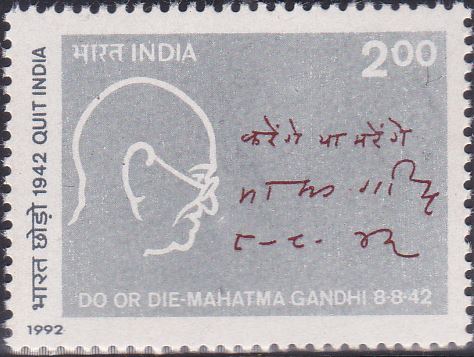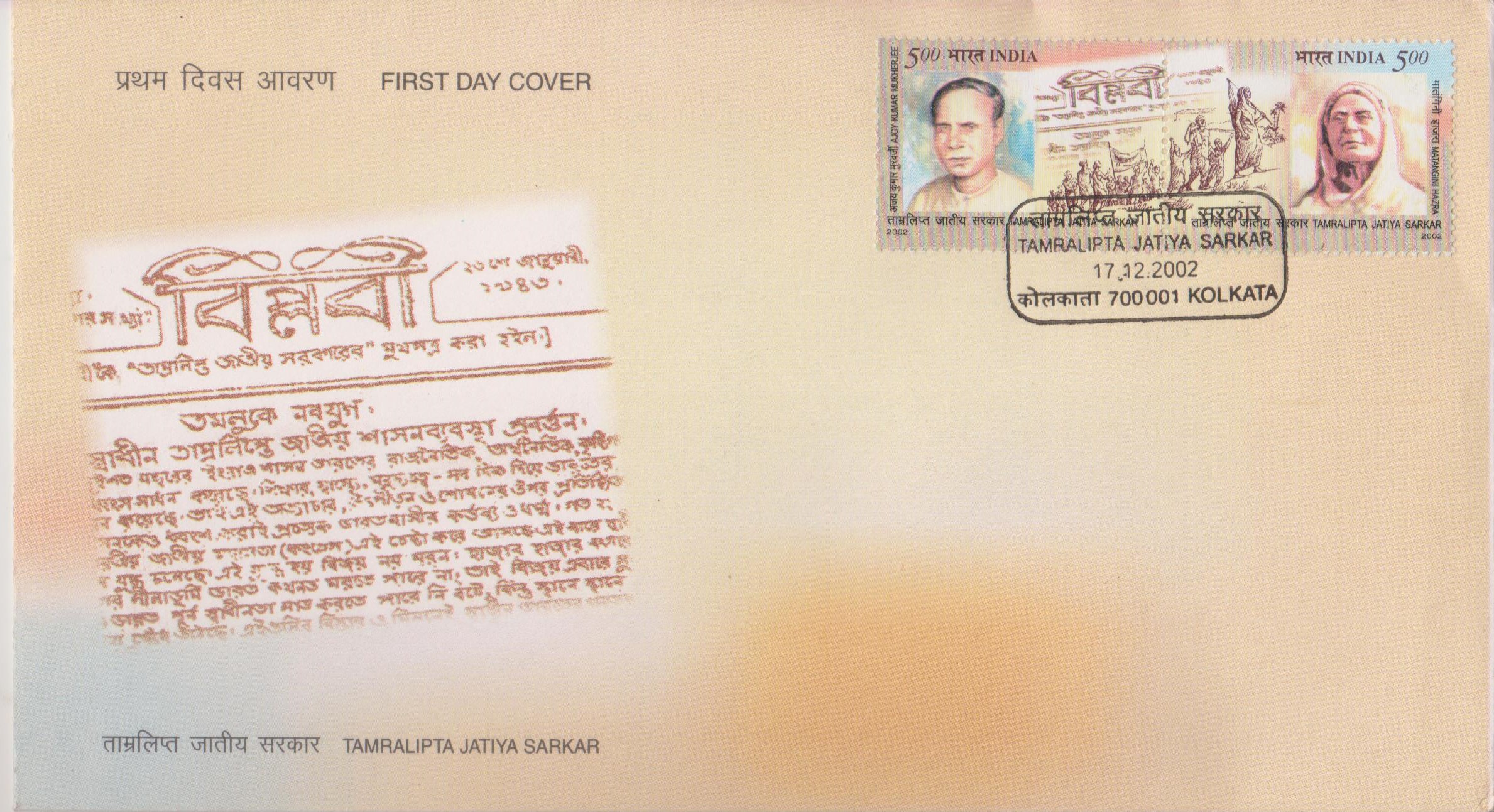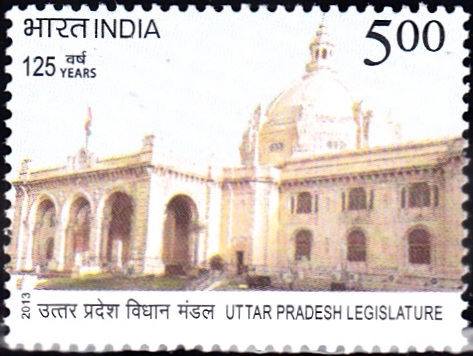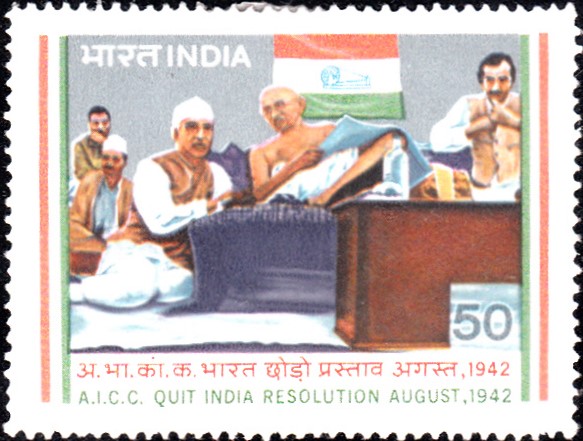
August Kranti : Ballia
A commemorative postage stamp on the India August Movement, Ballia, Uttar Pradesh, led by Sher-e Ballia (Lion of Ballia), Chittu Pandey :

 Issued by India
Issued by India
Issued on Aug 19, 2001
Issued for : The Department of Posts is proud to release a postage stamp commemorating the August Kranti of Ballia.
Design : The stamp carries a picture of the monument at Shaheed Park, Ballia. The first day cover carries an illustration of Chittu Pandey who led the ‘National Government’ in Ballia and became famous as the ‘Tiger of Ballia‘.
Credits :
Stamp : Sankha Samanta
FDC : Suresh Kumar
Cancellation : Alka Sharma
Type : Stamp, Mint Condition
Colour : Four Colour
Denomination : 400 Paise
Overall size : 2.90 x 3.91 cms.
Printing Size : 2.90 x 3.91 cms.
Perforation : 13.5 x 13.5
Paper : Matt Chromo
Stamps Printed : 0.4 million
Number per issue sheet : 40
Printing Process : Photo Offset
Printer : Calcutta Security Printers Ltd.
About :
- The August Kranti (August Revolution) which took place in Ballia in Uttar Pradesh is one among the most inspiring chapters of the Quit India Movement of 1942.
- The Indian National Congress at its Bombay session (August 1942) passed the famous Quit India resolution, calling for a mass struggle under the leadership of Mahatma Gandhi. “Do or Die” was the mantra which Gandhiji gave the people of India. However, even before the Congress could start the movement, the British administrative machinery came down swiftly and heavily. All the major leaders were arrested and the Congress itself was declared illegal. A dismayed India reacted spontaneously against this repressive act. Popular revolts broke out across the length and breadth of the country, with the battle cry of “British Quit India“.
- A prominent feature of the Quit India Revolt was the chain of ‘National Governments‘, which came to be established in many parts of the country, though most of them could survive only for a few weeks.
- In Ballia District of U.P. the revolt started with protest demonstrations of the students. The arrest of a few girls and at-random firing by the police in the market sent a wave of indignation into the hearts of the people. The resultant anger and excitement led to spontaneous acts of protest like removal of rails, cutting of telegraph wires and burning of railway and police stations in the rural areas. In less than a week the local people raided the police stations, treasuries and other government offices of the District and occupied them. The authorities surrendered immediately and the national flag was hoisted over these buildings.
- Having occupied the whole District and disrupted the colonial administrative machinery, the onus of setting up a parallel ‘government’ fell upon the leaders of the revolt. They undertook the task in a most responsible and efficient manner and a National Government was set up in Ballia on the 19th of August. Chittu Pandey, a charismatic leader described as the “Tiger of Ballia” by Jawaharlal Nehru and Subhas Chandra Bose, headed the Government. The entire population of Ballia supported the National Government and donated thousands of rupees to enable the Government to carry on its administration.
- Unfortunately, the new Government could not last for more than a few days, in the face of the severe repression unleashed by the British rulers. Though the movement was finally suppressed, it did succeed in demonstrating the depth and fervour of the nationalist feelings. It proved beyond any doubt that the days of colonialism were numbered in India.
- Text : Based on India’s Struggle for Independence published by the NCERT as well as Ballia – 1942 Smarika published by the Information and Public Relations Department, Uttar Pradesh.


